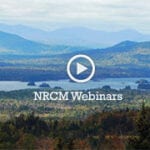Atlantic Salmon Federation | Conservation Law Foundation | Maine Rivers | Natural Resources Council of Maine
News release
September 9, 2021 (Augusta, ME) — A lawsuit filed today seeks to stop the owner of four dams on Maine’s Kennebec River from violating federal law. Operations at the dams are killing endangered Atlantic salmon and other sea-run fish critical to the state’s commercial fishing industry and the health of the Gulf of Maine.
The massive, multinational energy corporation Brookfield Renewable Partners (Brookfield) owns more than 5,000 dams worldwide, including 17 in the Kennebec watershed. Their four dams between Waterville and Skowhegan block access to spawning and rearing habitat for Atlantic salmon in the Sandy River and hinder restoration of American shad, alewives, blueback herring, sea lamprey, and American eel. These obsolete dams represent only 0.002 percent of the company’s 19,000 megawatts of worldwide generating capacity.
For more than two years, Brookfield has been violating the Endangered Species Act (ESA) by killing endangered Atlantic salmon migrating upstream and downstream on the Kennebec. The ESA prohibits the killing, harming, or capture of endangered species unless a company has received an “incidental take” permit.
Brookfield’s ESA authorization to “take” Atlantic salmon trying to pass through the dams expired in 2019. The conservation groups that filed the lawsuit are asking the court to order Brookfield to cease operations that cause take during salmon migration periods, which run from April 1 to December 31.
“Maine can achieve a healthy Kennebec River that supports expanding fish populations and meets the needs of riverfront communities, including the continued operation of the SAPPI paper mill in Skowhegan,” said the Atlantic Salmon Federation, Conservation Law Foundation, Maine Rivers, and Natural Resources Council of Maine in a joint statement. “This future is only possible if Brookfield stops violating the law and starts to play a constructive role in solving the problems its four dams cause. Instead, the company is spreading fear and misinformation and violating one of America’s landmark environmental laws.”
Brookfield operates harmful dams on other Maine rivers, including the Union River in Ellsworth, where alewife kills are routinely documented, and a State Water Quality Certificate was recently denied. In the case of the Kennebec, the company has not taken the necessary steps to fix its dams’ problems. Instead, Brookfield has delayed progress by submitting proposals for fish passage that the company knows are ineffective and have not worked anywhere else in the world.
Removing Brookfield’s four dams on the Kennebec is the nation’s best chance to save Atlantic salmon from extinction, bring back millions of other sea-run fish, and revive a river that was historically the most productive in Maine. State and federal agencies have reinforced the economic and ecological benefits of further dam removal and have also admonished Brookfield for its negligence. In July 2020, the federal government rejected Brookfield’s proposed Species Protection Plan (SPP) for Atlantic salmon.
“The four lowermost projects in the Kennebec River…have a disproportionately large impact on the natural resources in comparison to their authorized capacity because of their location relative to spawning and rearing habitat,” according to the Maine Department of Marine Resources.
“Diadromous fish support key ecological functions as a mechanism for nutrient transport, prey for commercially and recreationally important fish, and baitfish for the lobster industry. Dam removal will support restoration of these key species in support of these ecological and social functions and values,” in the view of the National Marine Fisheries Service.
Prior experience in Maine proves that removing dams is the best way to restore rivers, and that it can be done while successfully relocating and modernizing in-river infrastructure for pulp and paper mills and municipalities.
The lower Kennebec surged back to life after the removal of the Edwards and Fort Halifax Dams in 1999 and 2008 bringing back millions of sea-run fish, such as shad and river herring. But that success has stalled because Brookfield’s Lockwood, Hydro-Kennebec, Shawmut, and Weston Dams create an impassable wall for adult salmon and other fish moving upstream from the Gulf of Maine. Warm temperatures and predators in the 30 miles of stagnant water behind these dams are also killing younger salmon as they try to return to the ocean.
The Kennebec was once the most productive river in Maine for sea-run fish, with Atlantic salmon runs in the hundreds of thousands. Nicknamed “The King of Fish” and “The Leaper,” Atlantic salmon live half of their lives in our rivers and streams and half their lives in the ocean. They travel thousands of miles to the waters off Greenland and back, returning to spawn in the same freshwater streams where they were born. The species is culturally and spiritually important to many people across Europe and eastern North America, and particularly the Wabanaki tribes of Maine and Canada.
For additional background information on Kennebec River restoration:
- Web page – Restoring the Kennebec above Waterville
- Press release – “Mainers call for removal of dams to restore a healthy Kennebec and save salmon”
- Blog – “Fatal Flaws in Brookfield’s Proposal for the Kennebec”
- Perspective – “Restoring the Kennebec, the nucleus of Wabaki life” by Mali Obomsawin
- Perspective – “Enough of ‘pickerel vs. payroll’ on Kennebec” by Willie Grenier
- Video – “Saving Atlantic Salmon on the Kennebec” (pre-recorded webinar)











